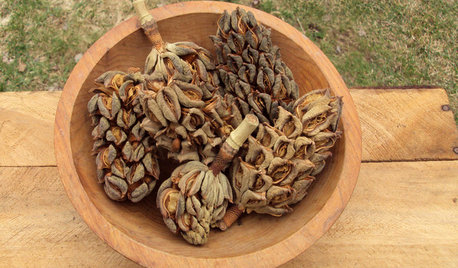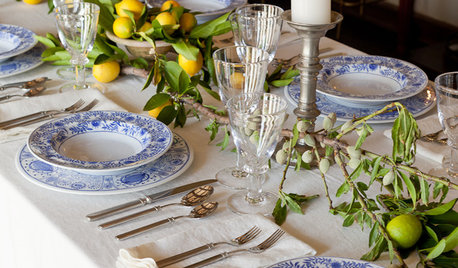acorn leaching and sticking together
locust
19 years ago
Related Stories

ECLECTIC HOMESMy Houzz: Earthy and Eclectic in San Francisco
Two renovations over more than a decade result in a warm, personal home that functions just as well as it appeals to the eye
Full Story
LIFE8 Ways to Embrace the Wonder of Fall
Savor the small joys of the new season with these ideas for home and the outdoors
Full Story
HOLIDAYSSpend Less Without Being a Grinch: 8 Holiday Ideas
Give meaningful gifts and use nature's decor to work holiday magic without blowing your budget
Full Story
HOUSEKEEPINGHow to Clean a Glass Shower Door
See which tools and methods will keep those glass shower walls and doors sparkling clean
Full Story
TRADITIONAL HOMESHouzz Tour: A Historic Remodel Keeps the Romance Alive
It was love at first sight for the owner of a 2-centuries-old house. She and her husband renovated it with tender loving care
Full Story
HOLIDAYSLuxurious Holiday Table Settings for Less
Pair colorful glasses, gorgeous garden finds and hand-stamped napkins for a holiday table that looks positively rich
Full Story
FARM YOUR YARDAdvice on Canyon Farming From L.A.'s Vegetable Whisperer
See how a screened garden house and raised beds help an edible garden in a Los Angeles canyon thrive
Full Story
FALL AND THANKSGIVING8 Creative Accents to Set Your Holiday Table Apart
Give fall meals flair with decorations and serving pieces you make — or make better — yourself
Full Story
HOLIDAYS50 Ways to Wrap Holiday Gifts in Style
Here are all the tools and trimmings you need for your best-wrapped gifts ever
Full Story
DECORATING GUIDESHow to Create a Cohesive Color Flow Throughout Your Home
Designers share eight techniques for avoiding a choppy feeling in your spaces
Full StorySponsored






althea_gw
lucky_p
Related Professionals
Canton Landscape Architects & Landscape Designers · Tomball Landscape Architects & Landscape Designers · Alexandria Landscape Contractors · Salem Landscape Contractors · Brockton Landscape Contractors · Cary Landscape Contractors · Cordele Landscape Contractors · Edwardsville Landscape Contractors · Nutley Landscape Contractors · Riverview Landscape Contractors · Wallingford Landscape Contractors · Winter Gardens Landscape Contractors · Casselberry Landscape Contractors · Daly City Carpenters · Tigard Siding & Exteriorsalthea_gw
thea_pathworks_net
lucky_p